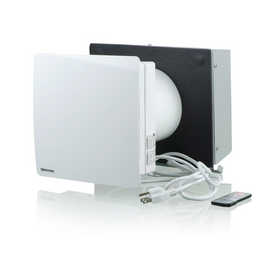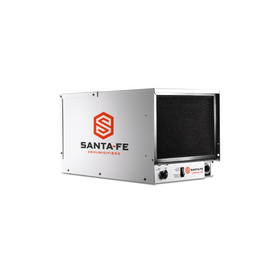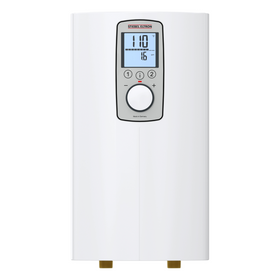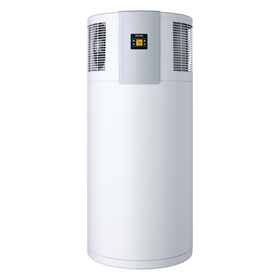
A Guide to Purchasing Green Power for Your Home
Last Updated: Apr 11, 2025The transition to green and renewable energy sources is one of the hallmarks of our current age. As the effects of global warming becoming increasingly evident, governments, businesses, and individuals around the world are racing to implement policies and practices that move us toward net-zero emissions. With the United States recently reentering The Paris Agreement on Climate Change, there is now an international legal framework to guide and structure these efforts. Green power represents one of the best strategies to drastically reduce our greenhouse gas emissions, improve air quality in urban areas, and even help homeowners save money on their household energy bills. In this short article, we will look at how homeowners can purchase green power for their homes.
Table of Contents
- What Are the Problems Facing the Electricity Sector?
- What Are the Barriers to Widespread Home Solar Power Installation?
- What Is Green Power?
- How Does Purchasing Green Power Work?
- Why Buy Green Power?
- Who Sells Green Power in North America?
- How Much Does Green Power Cost?

What Are the Problems Facing the Electricity Sector?
Electricity generation has long been one of the main contributors to the greenhouse gasses driving climate change. It has also been a primary culprit of severe air pollution that negatively affects people living in urban areas and near major fossil fuel power plants. A report by the Union of Concerned Scientists found that the United States' electricity sector is directly responsible for around 66 percent of its sulfur dioxide emissions. Although sulfur dioxide emissions have decreased over the past decade, they still play a significant part in the roughly 60,000 people who died due to air pollution around the US in 2019. The fossil fuels we burn to light and power our buildings also contribute almost one-third of total nitrogen oxide emissions. These emissions lead to smog in urban areas and cause a host of dangerous respiratory problems.
The Environmental Protection Agency (EPA) also finds that about 27 percent of all greenhouse gas emissions came from the electricity production sector in 2018. Though that number has been falling over the past decade, the electricity production sector is still the second-largest emitter of greenhouse gasses in the United States. In the United States, 63 percent of electricity comes from burning fossil fuels, mainly coal and natural gas. For comparison's sake, electricity generation only accounted for 10.9 percent of Canada's total greenhouse gas emissions. In 2016, Canada generated over 80 percent of its electricity from sources that are non-emitting when generating.
These statistics show that transforming the electricity sector should be one of the main priorities to help us achieve a net-zero future. And there are indeed signs for hope. A recent report by the Solar Energy Industry Association (SEIA) finds that solar power has enjoyed an annual growth rate of 49 percent over the past ten years. There is now enough solar capacity installed nationwide to power 16 million homes. Despite these advances, however, challenges remain.
Many families feel that renewable energy is simply out of their reach without the ability to solar panels on their own homes. In the past, Rise has written about how community solar energy programs respond to this problem. Green power programs offered through local utility providers are another potential option. They can facilitate the uptake of renewable energy for individuals, families, and homeowners who cannot install renewable energy systems on their own homes or properties.

What Is Green Power?
The US EPA defines green power as a subset of renewable energy that represents the "renewable energy resources and technologies that provide the highest environmental benefit." Green power comes from environmentally friendly, renewable, and low emission energy sources such as wind, solar, geothermal, biogas, eligible biomass, and low-impact small hydroelectric sources. Green power is substantially different than conventional energy sources such as nuclear and fossil fuel in its drastic reduction in greenhouse gas emissions.

Green power goes a step beyond some renewable energy sources such as large-scale hydroelectric dams and municipal solid waste incineration. These are both considered renewable sources of electricity generation. But they come with environmental effects like increased air pollution and the disruption of critical aquatic ecosystems, which need consideration.
A recent survey reported by the New York Times found that 66 percent of respondents believed that developing clean energy sources should be a high priority. Similarly, nine out of ten Americans say that they support the country's growth of solar energy. Many utility companies worldwide recognize that a considerable portion of individuals and households cannot install autonomous renewable energy systems (either grid-connected or off-grid). So they have begun to implement a variety of green power purchasing programs. These programs allow grid utility customers to conscientiously choose and purchase green power for its zero-emissions profile and carbon footprint reduction benefits.
How Does Purchasing Green Power Work?
Several schemes and programs allow individuals and households to purchase and support green power. The United States Department of Energy reports that in every state of the country, individuals can decide to buy green power through one of the following types of programs:
- Green Pricing
- Competitive Electricity Markets
- Green Certificates
Green Pricing
With green pricing programs, power companies allow their customers to pay a small premium to ensure that the electricity delivered to their homes is generated from clean, renewable, and green energy sources. The minimal extra costs cover the additional expense of developing and distributing renewable energy from the utility provider's perspective. However, it is essential to point out that renewable energy options are becoming increasingly cost-competitive with fossil fuel sources of power. In many cases, they are already the cheapest option on the market for many power companies.
Competitive Electricity Markets
In the past, large corporations dominated electricity markets that essentially had a monopoly over power distribution in a given area. In those cases, individuals had little influence over the type of energy they received. However, with competitive electricity markets, many consumers can exercise an increased level of control over which companies generate their power. Many states have restructured electricity grids and the industry in general to increase levels of competition. Due to growing consumer awareness of the importance of renewable energy options, many power providers with a primarily renewable energy portfolio are taking advantage of these restructured markets to sell clean power products to customers - for residential, commercial, and wholesale use. Consumers can decide to pay a slightly higher price in these green power arrangements to "offset" the additional costs utility companies incur by prioritizing green power sourced from renewable sources.
Green Certificates
Green certificates allow individuals and households to contribute to clean and renewable green power across the country. Homeowners can take advantage of this, even if no power companies directly offer this type of energy in your region. These renewable energy certificates are also known as tradable renewable certificates. Consumers purchase these certificates, which are subsequently sold to businesses and individuals who want to increase the amount of clean power entering our nation's electricity supply. Green certificates essentially make it possible for any household to encourage the development of additional renewable energy projects.
Energy Saving Products for the Home
Shop home improvement products that help save and conserve energy (power) in your home.

Vents TwinFresh Comfo RA1-50-2 Ductless Energy Recovery Ventilator
Vents
In Stock

Stiebel Eltron Accelera 300 E Heat Pump Water Heater
Stiebel Eltron
Out of Stock

AFM Safecoat Almighty Adhesive Case of 12
AFM Safecoat
In Stock

Emporia Classic Level 2 48 AMP EV Charger UL Listed
Emporia
In Stock
2 Colors

Stiebel Eltron CON 300-2 Premium Wall-Mounted Convection Heater - 202030
Stiebel Eltron
Out of Stock

Santa Fe Compact70 Dehumidifier - 4044110
Santa Fe
In Stock

AFM Safecoat 3 in 1 Adhesive
AFM Safecoat
In Stock

QuickBOLT QB2 with Microflashing Multi Roof Mount Solar Panel Fastener Kit
QuickBOLT
In Stock

Stiebel Eltron DHC-E 8/10-2 Plus Point-of-Use Electric Tankless Water Heater - 202145
Stiebel Eltron
In Stock

Stiebel Eltron Accelera 220 E Heat Pump Water Heater
Stiebel Eltron
In Stock
One of the leading green power companies in Canada, Bullfrog Power, promises that "for every kWh of electricity you use, a kWh from a pollution-free, renewable source is put on the grid on your behalf." As more and more renewable energy projects are rolled out, this also helps to drive down the price to help green power move into the mainstream in the coming decade. The EPA furthers this sentiment. They say that purchasing green power can help to "hedge against future electricity price increases and volatility," especially energy associated with the uncertainty of increasingly hard to extract fossil fuels.
How Much Does Green Power Cost?
The actual cost of purchasing green power will depend on your specific energy company and the type of green power program that they have in place. However, the National Renewable Energy Laboratory (NREL) finds that the average residential premium for participation in a green power program is about $0.018/kilowatt-hour (kWh). For a typical household, this averages out to an additional energy cost of $195 per year.

Paying an extra $200 per year to reduce your household's carbon footprint and help to stimulate green energy production around the country can be considered a small price to pay. By implementing just a few of these tips for lowering your household energy usage, the savings alone could certainly offset this extra cost.
Tobias Roberts
Tobias runs an agroecology farm and a natural building collective in the mountains of El Salvador. He specializes in earthen construction methods and uses permaculture design methods to integrate structures into the sustainability of the landscape.




